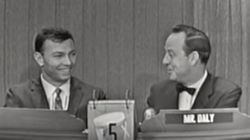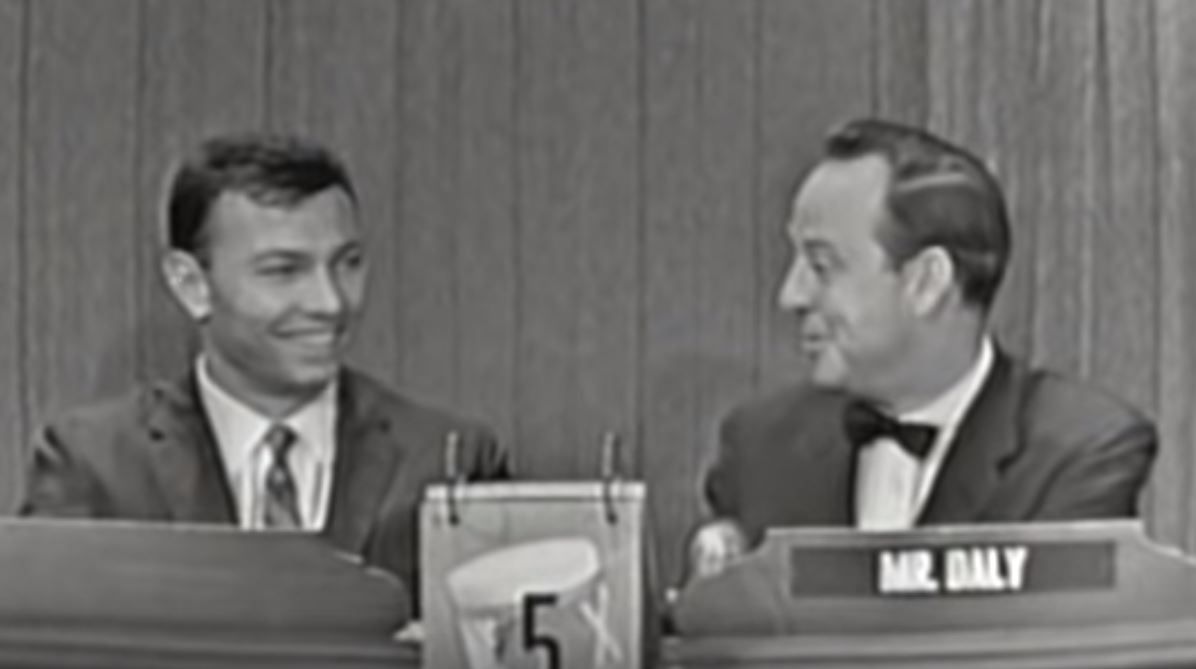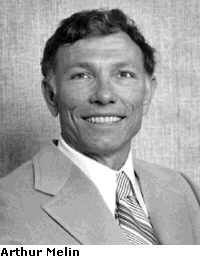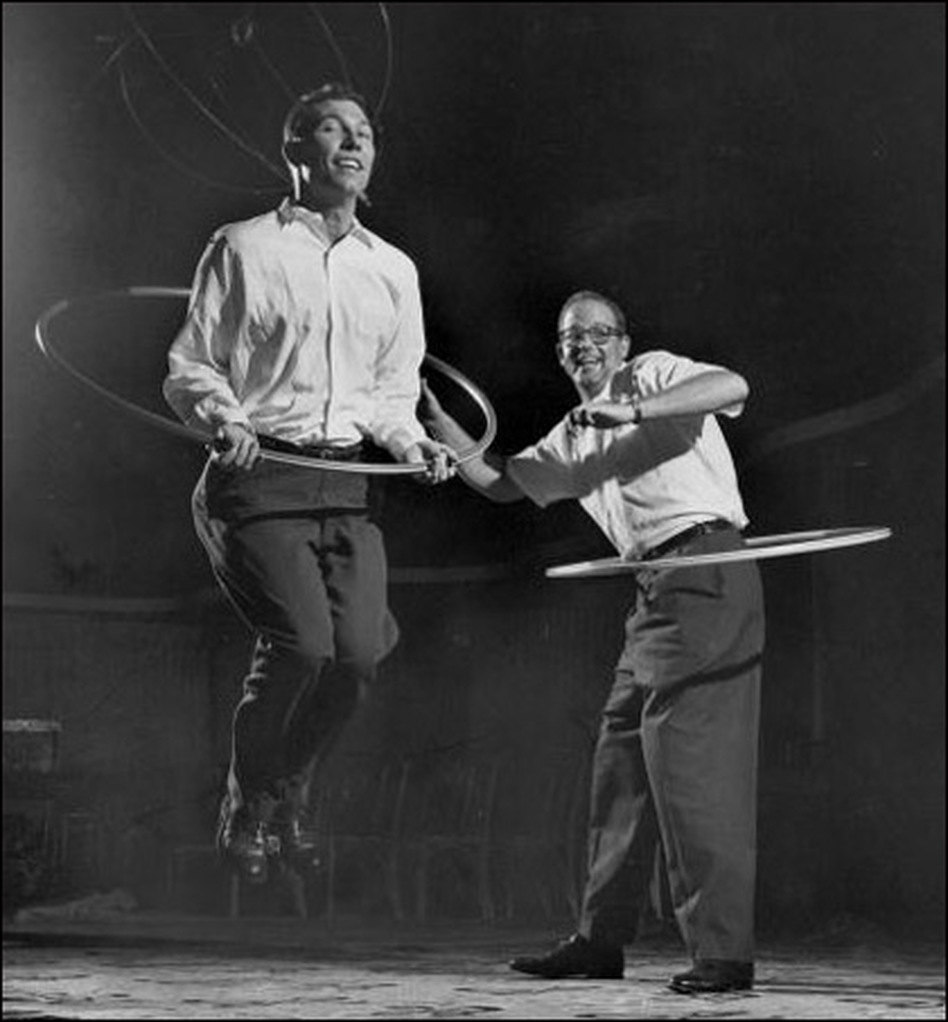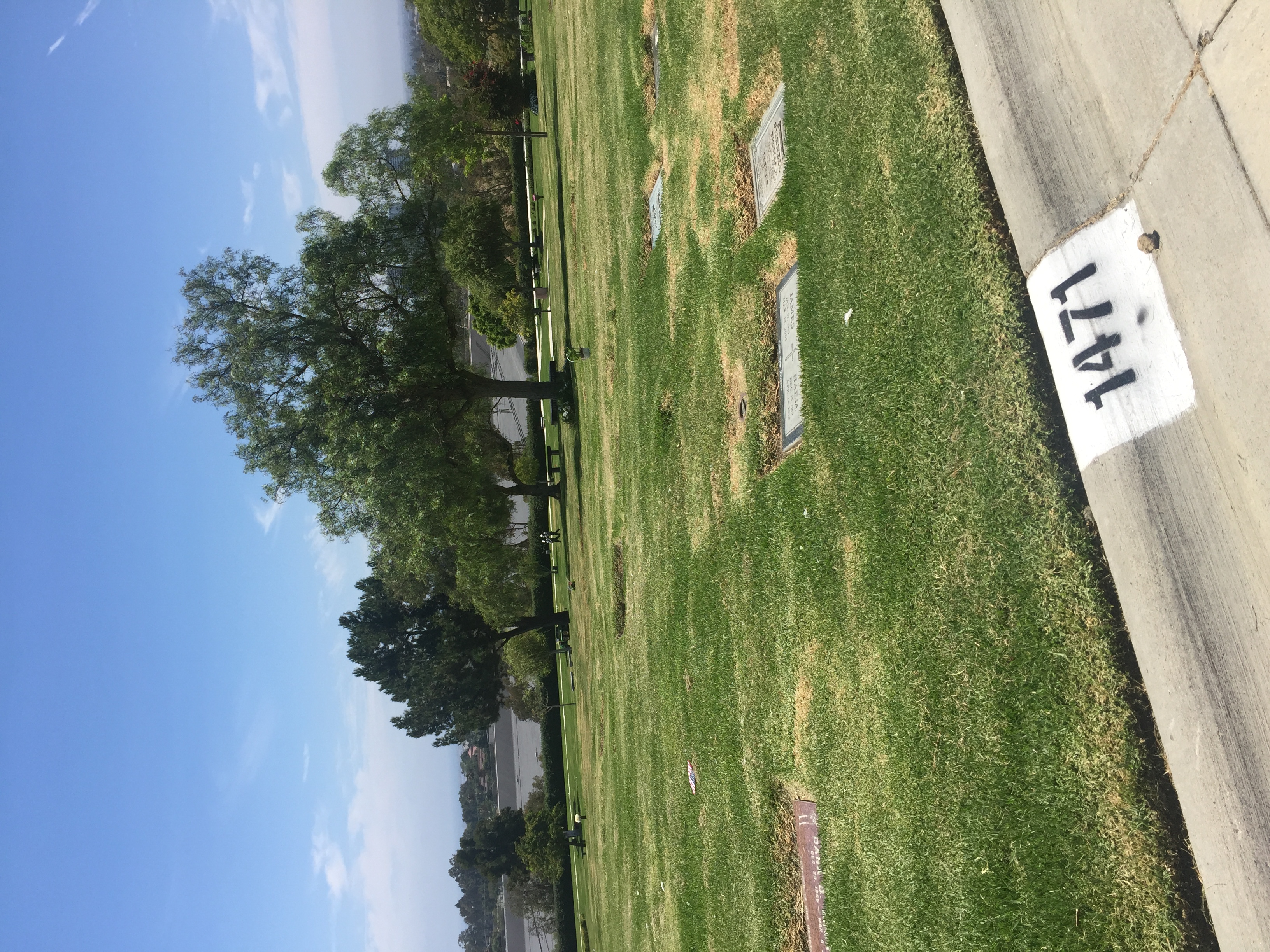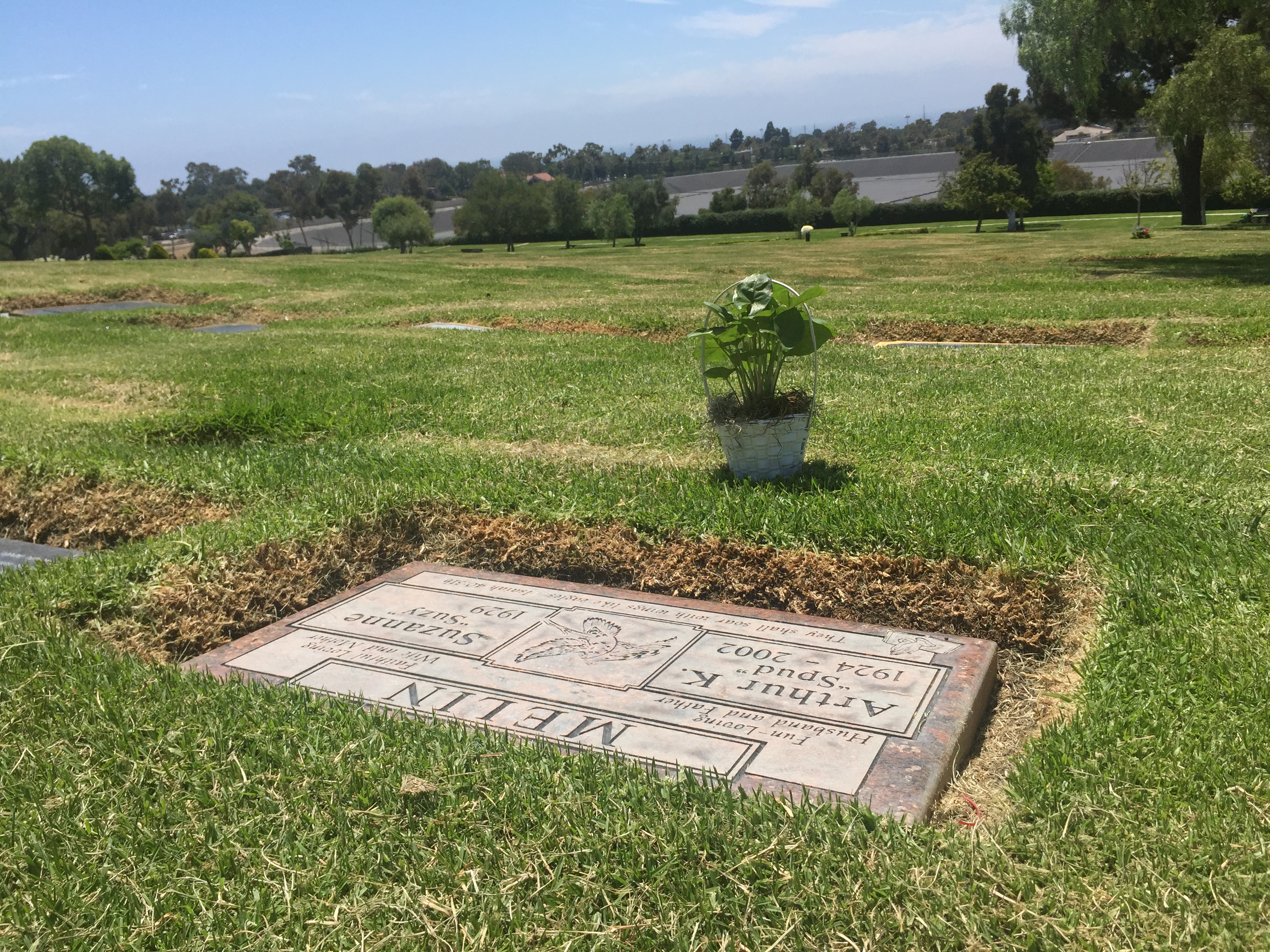He was 77 and had lived in Irvine, Calif. The cause was Alzheimer's disease, his wife, Suzy, said.
Born in Los Angeles, Mr. Melin, known by his childhood nickname Spud, formed Wham-O with a friend, Richard Knerr, in 1948, while they were working for their fathers and attending the University of Southern California.
Their inspiration came from a slingshot they had made while hunting with falcons, which was used to shoot meat up to the birds. They bought a saw at Sears, Roebuck & Company on a monthly payment plan, set it up in a garage and began making and selling slingshots. The name Wham-O was meant to evoke the noise a slingshot made.
At first, they focused on sporting goods, rather than toys, but they kept an eye out for unusual items like boomerangs and crossbows.
Early on, they tried some other, ill-fated endeavors. Mr. Melin (pronounced muh-LIN) once bought a truckload of oysters from Texas in hopes of starting a raw bar in California modeled after those he had seen in New York. The enterprise ended with the oysters being dumped into a nearby bay because they could not get the venture off the ground.
Wham-O's first incursion into the mainstream came in 1955, when it bought the idea for a plastic flying disk from a building inspector named Walter Frederick Morrison. Wham-O first tried to sell the disk as the Pluto Platter, an attempt to cash in on the country's fascination with unidentified flying objects. The next year it was refined and reintroduced as the Frisbee.
For years, college students, especially at Yale, had played a game of catch with pie tins (or in some versions of the story, lids of cookie jars) made by the Frisbie Pie Company of Bridgeport, Conn. Mr. Knerr said in an interview yesterday that the similarity of the name of Wham-O's disk to the name of the student game was a coincidence. Rather, he said, the name came from a comic strip of the era called Mr. Frisbie.
But the connection was not coincidental to the success of the Frisbee, which found its earliest acceptance at Eastern colleges. Wham-O, in fact, hired students to sell Frisbees on campuses until it could get distribution in stores. By 1957, the company had sold several million of the disks.
But nothing could compare to the whirlwind force of the Hula-Hoop, which Wham-O introduced the next year. A toy maker from Australia gave Mr. Mullin and Mr. Knerr a wooden exercise hoop used in gymnastics classes. They did not know what to make of it until another friend from Australia showed them how to gyrate their hips, thus spinning the hoop.
''Spud brought it home and showed it to me,'' Mrs. Melin recalled yesterday. ''He said it would be huge. But I said, 'You can't put that on television. They just banned Elvis Presley's hips from the Ed Sullivan show.' ''
Mr. Melin was right, though. Soon, crowds of teenagers rotating their hula hoops were featured in Life magazine and on the Dinah Shore Show. By the summer of 1958, the Hula-Hoop, and its many imitators, took the nation by storm. By various estimates, 20 million to 40 million were sold that year worldwide.
But as quickly as the fad arrived, it ended, when school began, leaving Wham-O with millions of hoops and a $10,000 loss for the year.
Wham-O rebounded a few years later with the unusual spring of the SuperBall, made of a compressed plastic known as Zectron. In the 1960's, the company says, it sold 20 million SuperBalls until it dropped the product. But Wham-O continued to make other novelties, like Silly String and the Slip 'n' Slide.
Tiring of business, Mr. Melin persuaded Mr. Knerr to sell the company in 1982 to the Kransco Group Companies for $12 million. (It was later sold to Mattel, which then sold it to a group of investors.)
Mr. Melin became active in conservative causes like immigration reform, but continued to pursue inventions. He patented a design for a two-handed tennis racket with an adjustable handle.
Ten years ago, he was diagnosed with Alzheimer's disease. Since then, he has been involved in several experimental treatments, Mrs. Melin said, and he has willed his brain to the University of California at Irvine, where he was treated.
Besides his wife, he is survived five daughters, Linda Melin, Sally Melin, June Macy-Melin, Carol Denham and Della Peterson; a brother, Tom Melin; and 11 grandchildren.
He was 77 and had lived in Irvine, Calif. The cause was Alzheimer's disease, his wife, Suzy, said.
Born in Los Angeles, Mr. Melin, known by his childhood nickname Spud, formed Wham-O with a friend, Richard Knerr, in 1948, while they were working for their fathers and attending the University of Southern California.
Their inspiration came from a slingshot they had made while hunting with falcons, which was used to shoot meat up to the birds. They bought a saw at Sears, Roebuck & Company on a monthly payment plan, set it up in a garage and began making and selling slingshots. The name Wham-O was meant to evoke the noise a slingshot made.
At first, they focused on sporting goods, rather than toys, but they kept an eye out for unusual items like boomerangs and crossbows.
Early on, they tried some other, ill-fated endeavors. Mr. Melin (pronounced muh-LIN) once bought a truckload of oysters from Texas in hopes of starting a raw bar in California modeled after those he had seen in New York. The enterprise ended with the oysters being dumped into a nearby bay because they could not get the venture off the ground.
Wham-O's first incursion into the mainstream came in 1955, when it bought the idea for a plastic flying disk from a building inspector named Walter Frederick Morrison. Wham-O first tried to sell the disk as the Pluto Platter, an attempt to cash in on the country's fascination with unidentified flying objects. The next year it was refined and reintroduced as the Frisbee.
For years, college students, especially at Yale, had played a game of catch with pie tins (or in some versions of the story, lids of cookie jars) made by the Frisbie Pie Company of Bridgeport, Conn. Mr. Knerr said in an interview yesterday that the similarity of the name of Wham-O's disk to the name of the student game was a coincidence. Rather, he said, the name came from a comic strip of the era called Mr. Frisbie.
But the connection was not coincidental to the success of the Frisbee, which found its earliest acceptance at Eastern colleges. Wham-O, in fact, hired students to sell Frisbees on campuses until it could get distribution in stores. By 1957, the company had sold several million of the disks.
But nothing could compare to the whirlwind force of the Hula-Hoop, which Wham-O introduced the next year. A toy maker from Australia gave Mr. Mullin and Mr. Knerr a wooden exercise hoop used in gymnastics classes. They did not know what to make of it until another friend from Australia showed them how to gyrate their hips, thus spinning the hoop.
''Spud brought it home and showed it to me,'' Mrs. Melin recalled yesterday. ''He said it would be huge. But I said, 'You can't put that on television. They just banned Elvis Presley's hips from the Ed Sullivan show.' ''
Mr. Melin was right, though. Soon, crowds of teenagers rotating their hula hoops were featured in Life magazine and on the Dinah Shore Show. By the summer of 1958, the Hula-Hoop, and its many imitators, took the nation by storm. By various estimates, 20 million to 40 million were sold that year worldwide.
But as quickly as the fad arrived, it ended, when school began, leaving Wham-O with millions of hoops and a $10,000 loss for the year.
Wham-O rebounded a few years later with the unusual spring of the SuperBall, made of a compressed plastic known as Zectron. In the 1960's, the company says, it sold 20 million SuperBalls until it dropped the product. But Wham-O continued to make other novelties, like Silly String and the Slip 'n' Slide.
Tiring of business, Mr. Melin persuaded Mr. Knerr to sell the company in 1982 to the Kransco Group Companies for $12 million. (It was later sold to Mattel, which then sold it to a group of investors.)
Mr. Melin became active in conservative causes like immigration reform, but continued to pursue inventions. He patented a design for a two-handed tennis racket with an adjustable handle.
Ten years ago, he was diagnosed with Alzheimer's disease. Since then, he has been involved in several experimental treatments, Mrs. Melin said, and he has willed his brain to the University of California at Irvine, where he was treated.
Besides his wife, he is survived five daughters, Linda Melin, Sally Melin, June Macy-Melin, Carol Denham and Della Peterson; a brother, Tom Melin; and 11 grandchildren.
Sponsored by Ancestry
Advertisement
Advertisement
